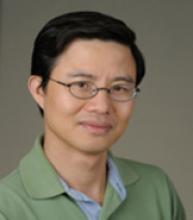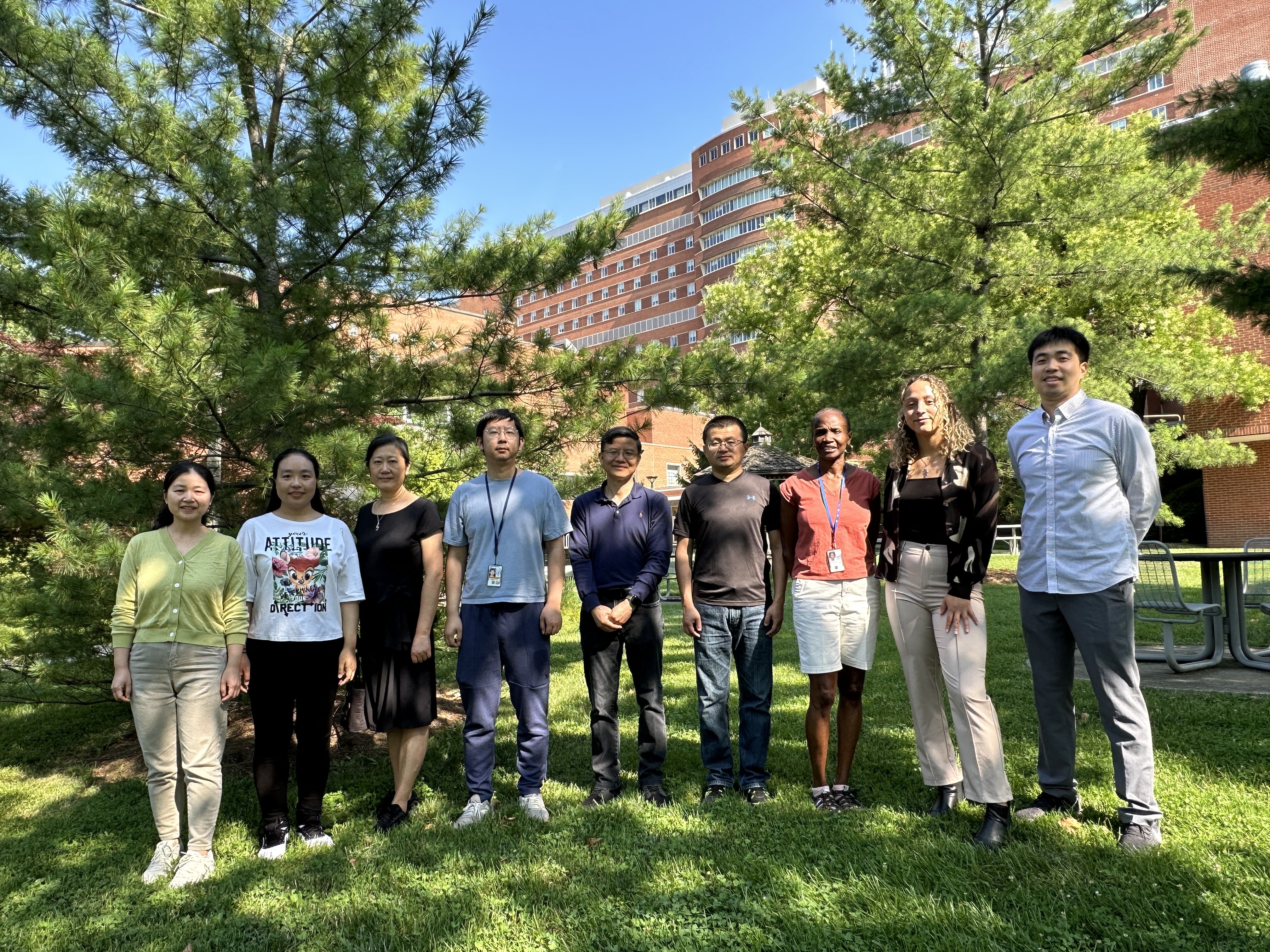Molecular and Cellular Immunoregulation Section
Established in 2011
Jinfang (Jeff) Zhu, Ph.D.
Chief, Molecular and Cellular Immunoregulation Section

Major Areas of Research
- Diversity and plasticity of T helper (Th) subsets
- Development and functions of innate lymphoid cell (ILC) subsets
- Transcriptional regulation of lineage-specific genes
Program Description
Lymphocytes, CD4 T cells in particular, play a central role in orchestrating adaptive immune responses. After being activated through their T-cell receptor (TCR) in a particular cytokine milieu, naive CD4 T cells differentiate into distinct Th lineages, including Th1, Th2, and Th17 cells, which are indispensable for different types of immunity to various microorganisms. Other CD4 T cells include follicular T cells (Tfh) and regulatory T cells (Treg). Tfh cells are critical for promoting antibody responses, whereas Treg cells, which consist of thymic derived regulatory T cells (tTregs) and peripherally induced regulatory T cells (pTregs), are involved in maintaining immune tolerance and lymphocyte homeostasis. Inappropriate Th responses to pathogens may lead to chronic infection and/or tissue damage to the host. Similarly, unnecessary activation of Th1, Th17 or Th2 cells by harmless environmental- or self-antigens can cause organ-specific autoimmune diseases or allergic inflammatory diseases.
There are innate counterparts of Th cell subsets, namely innate lymphoid cells (ILCs), whose development requires signaling through the IL-2 receptor (IL-2R) common γ chain and IL-7Rα. Distinct subsets of ILCs have the capacity to produce similar sets of characteristic effector cytokines as produced by Th cells. Therefore, they are classified into type 1 innate lymphoid cells (ILC1s) that produce IFNγ, type 2 innate lymphoid cells (ILC2s) that produce IL-13, and type 3 innate lymphoid cells (ILC3s) including lymphoid tissue inducers (LTis) and conventional ILC3s, that produce IL-17 and IL-22. ILCs are not only important for lymphoid organ development and immune responses to pathogens, but also involved in the development of autoimmune and allergic diseases.
Differentiation of Th cells is tightly regulated by the networks of specific transcription factors. At present, the master regulators of Th lineages that have been identified include T-bet/Stat4 (Th1), GATA-3/Stat5 (Th2), RORγt/Stat3 (Th17), Foxp3/Stat5 (Treg) and Bcl-6/Stat3 (Tfh), respectively. However, emerging data suggest that there are many more critical transcription factors in the regulatory network that are critical for T cell fate determination and functions. In addition, the expression of these factors may not be mutually exclusive, in some cases resulting in massive heterogeneity of CD4 T cells. Interestingly, ILCs also express many key transcription factors that are found in Th cells, suggesting that a given transcription factor may regulate one particular type of immune response in different immune cells.
A complete understanding of how transcription factor complexes are regulated and how they precisely control heterogeneity, plasticity, and stability of Th cells and ILCs has great implication in designing strategies to treat a broad range of immune-related diseases, including chronic bacterial and viral infections such as HIV, autoimmune diseases, allergic diseases, and cancers.
At the Molecular and Cellular Immunoregulation Section (MCIS), the functions of known key transcription factors, including GATA3 and T-bet, and novel, potentially critical transcription factors during Th and ILC differentiation/development are being investigated with various genetically modified mice including conditional knockout strains. To identify and study Th and ILC subsets at a finer level, multi-color “reporter” mice reflecting the expression of key transcription factors, such as T-bet, GATA3, RORγt and Foxp3, have been generated. Fate-mapping experiments to address T cell plasticity and stability are being performed using reporter mice in which inducible-Cre expression is under the control of cytokine or transcription factor locus. By using these indicator and fate-mapping mice, we have been investigating the development of various lymphocyte subsets at steady state and in autoimmune and infectious settings. Gene expression patterns are being compared through RNA-seq in “pure” Th and ILC subsets generated both in vitro and in vivo to identify lineage-specific genes. ChIPseq analyses are applied to assess genome-wide epigenetic modifications and DNA binding sites for key transcription factors in different cell types. Lineage-specific genes found in mice studies may serve as new biomarkers for identifying human T-cell subsets and/or targets for treating specific human diseases.
Biography
Education
Ph.D., Shanghai Institute of Biochemistry and Cell Biology, Chinese Academy of Sciences
Dr. Zhu received his bachelor’s degree summa cum laude from the department of biology, NanKai University, Tianjin, China, and his Ph.D. in biochemistry and molecular biology from the Shanghai Institute of Biochemistry (now known as Shanghai Institute of Biochemistry and Cell Biology), Chinese Academy of Sciences. He joined the Laboratory of Immunology (LI) first as a visiting fellow and then as a staff scientist studying CD4 T-cell differentiation. He was appointed as an Earl Stadtman investigator in the LI in 2011 and received tenure in 2017.
He is interested in investigating heterogeneity and plasticity of immune cells and their functions during normal and pathological immune responses at cellular and molecular levels. His focus is on induction and functions of transcription factor complexes during development, lineage commitment, and maintenance of immune cells, particularly CD4 T helper (Th) cells and innate lymphoid cells (ILCs).
Selected Publications
Fang D, Cui K, Cao Y, Zheng M, Kawabe T, Hu G, Khillan JS, Li D, Zhong C, Jankovic D, Sher A, Zhao K, Zhu J. Differential regulation of transcription factor T-bet induction during NK cell development and T helper-1 cell differentiation. Immunity. 2022 Apr 12;55(4):639-655.e7.
Zhong C, Zheng M, Cui K, Martins AJ, Hu G, Li D, Tessarollo L, Kozlov S, Keller JR, Tsang JS, Zhao K, Zhu J. Differential Expression of the Transcription Factor GATA3 Specifies Lineage and Functions of Innate Lymphoid Cells. Immunity. 2020 Jan 14;52(1):83-95.e4.
Yu F, Sharma S, Jankovic D, Gurram RK, Su P, Hu G, Li R, Rieder S, Zhao K, Sun B, Zhu J. The transcription factor Bhlhe40 is a switch of inflammatory versus antiinflammatory Th1 cell fate determination. J Exp Med. 2018 Jul 2;215(7):1813-1821.
Zhong C, Cui K, Wilhelm C, Hu G, Mao K, Belkaid Y, Zhao K, Zhu J. Group 3 innate lymphoid cells continuously require the transcription factor GATA-3 after commitment. Nat Immunol. 2016 Feb;17(2):169-78.
Yu F, Sharma S, Edwards J, Feigenbaum L, Zhu J. Dynamic expression of transcription factors T-bet and GATA-3 by regulatory T cells maintains immunotolerance. Nat Immunol. 2015 Feb;16(2):197-206.
Yagi R, Zhong C, Northrup DL, Yu F, Bouladoux N, Spencer S, Hu G, Barron L, Sharma S, Nakayama T, Belkaid Y, Zhao K, Zhu J. The transcription factor GATA3 is critical for the development of all IL-7Rα-expressing innate lymphoid cells. Immunity. 2014 Mar 20;40(3):378-88.
Research Network
Training Programs
Researcher Pages
Research Group
Our group (the Molecular and Cellular Immunoregulation Section) investigates the induction and functions of transcription factor complexes during the development, lineage commitment, and maintenance of immune cells, particularly CD4 T helper (Th) cell and innate lymphoid cell (ILC) subsets in steady state or under disease conditions including infection and inflammation.


